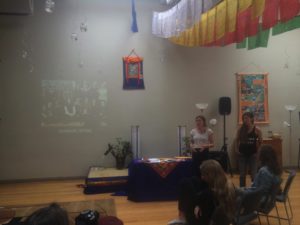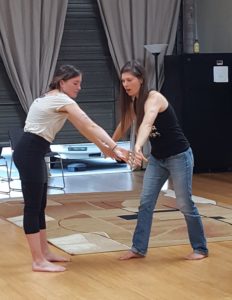The third meeting of the DGR Santa Barbara book club was held on Sunday, May 7th at the Eastside Library. We discussed chapter 4 of Deep Green Resistance: Strategy to Save the Planet. The following questions were posed to inspire discussion:
1) How did the “Alternative vs. Oppositional Culture” comparison affect your understanding of this distinction and your understanding of political action?
2) Do you believe that an alternative culture built around the project of an individualistic experience (whether spiritual or psychological) can create a resistance movement?
3) Where have you seen millenarianism in political movements? How does this affect the effectiveness of those movements, especially ones you have been a part of?
4) Do you see a culture of resistance forming in this country, in this state, in Santa Barbara? How could we help to encourage a culture of resistance here?
5) How does the dominant culture teach us to ignore the wisdom of our elders? Do you agree with the analysis presented in this chapter that resistance movements need both the young and the old to succeed?
6) What was your favorite part of the reading?
A couple people agreed that this is their favorite chapter in the entire book because it really clarifies the difference between the alternative culture of, for example, the hippies, and an oppositional culture. Alternative cultures cannot create a true, effective resistance movement because they do not challenge the structures of power that maintain the status quo. This distinction is really valuable, especially for young people exploring different groups and discovering what they want to do with their lives.
The discussion then turned to the concept of challenging monogamy as an integral part of certain alternative cultures. In most cases, this is nothing more than a convenient, radical-sounding excuse for misogynistic men to share sexual access to women. However, some women have also critiqued monogamy from a feminist perspective. In their vision, relationships should be based on women’s and men’s wants being equally important. Harmful, gendered socialization, which perpetuates the patriarchal idea of men owning women, would not exist. This led to a few attendees sharing their views about how another, egalitarian society could look and how relationships in that culture would be different than those in the dominant culture today.
During the meeting, we did not have time to fully cover the discussion questions; a discussion about chapter 4 will be continued through email. If you would like to be on that email list, please contact us at santabarbara@deepgreenresistance.org.
If you are interested in attending future book club meetings, subscribe to our local chapter news using the box on the right side of our website. The book club is taking a break for the summer. Our next meeting will be in late August.


